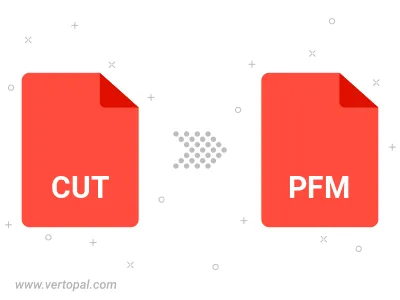Convert CUT to PFM
Convert CUT images to PFM format, edit and optimize images online and free.

The CUT file extension stands for Dr. Halo Bitmap Image. Originally developed by Media Cybernetics for the Dr. Halo software, it is a device-independent bitmap image format that supports 8 bits per pixel, allowing for a total of 256 colors. CUT files are used for storing small bitmap images and require a separate PAL file to define colors. Without this palette file, the images display as grayscale. Over time, support for CUT files has expanded to various other applications.
The Portable Floatmap (PFM) file format, also known as Portable FloatMap, is an image file format designed to store High Dynamic Range (HDR) images using floating-point values. Developed in the spirit of the Portable Pixmap format, PFM files contain image data with resolutions and byte order specified in the header. This format is particularly useful for applications requiring precise image data, such as computer graphics and image processing. PFM has been widely adopted in the IT industry for its ability to handle a wide range of pixel values beyond the standard 0-255 range, making it ideal for HDR imaging and other advanced visualizations.
Drag & drop any CUT file from your device or click the Choose File button to proceed.
Pick any CUT to PFM tools if you need to edit your CUT file, then click the Convert button.
Wait for the converter to finish and download your PFM image.

To change CUT format to PFM, upload your CUT file to proceed to the preview page. Use any available tools if you want to edit and manipulate your CUT file. Click on the convert button and wait for the convert to complete. Download the converted PFM file afterward.
Follow steps below if you have installed Vertopal CLI on your macOS system.
cd to CUT file location or include path to your input file.Follow steps below if you have installed Vertopal CLI on your Windows system.
cd to CUT file location or include path to your input file.Follow steps below if you have installed Vertopal CLI on your Linux system.
cd to CUT file location or include path to your input file.